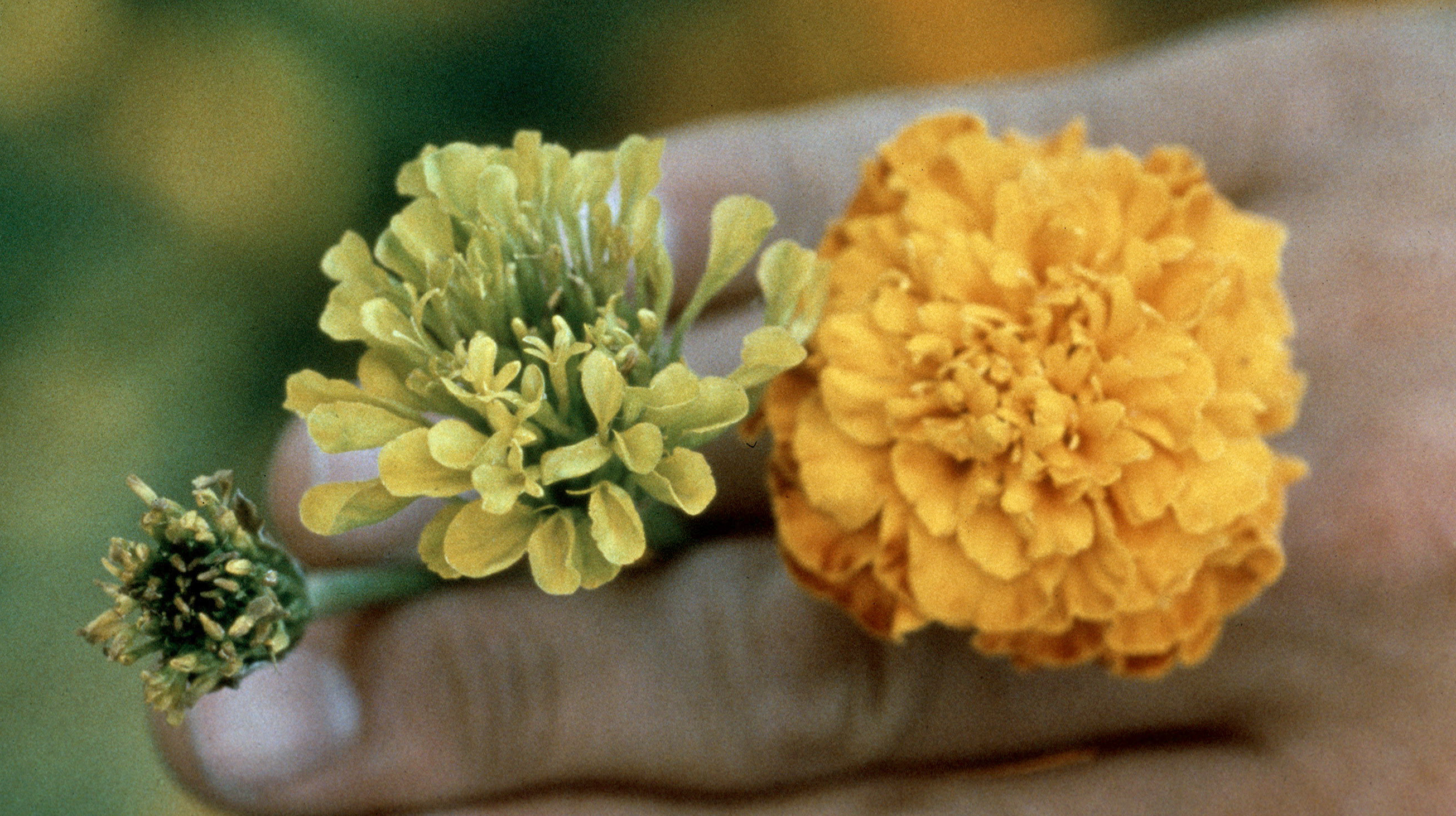
“…Zombie Plants”
I was listening to Prof. Saskia Hogenhout speak when a phrase she used took me by surprise. Did I hear that correctly? As if fictional zombie movies were not enough to give me sleepless nights, this now makes me start imagining zombie plants taking over cities. But she did just say “zombie plants”! And I thought I was going to hear Prof. Hogenhout talk about insect herbivory. Little did I know that it was more complicated than that.
She shows the zombie plants and I still wait for the scary part. The zombie plants are nowhere close to what I had imagined. The zombie plants look alive, healthy and green, except you notice that these plants have more leaves than the uninfected plants and what looks like organs that are somewhere between flowers and leaves. So, these plants are the living (budding?) dead, whose flowers have become leafy shoots and their petals green, thus preventing them from reproducing.
I know what you are thinking: you want to know if there was a virus outbreak like they show in movies, don’t you? Turns out it is a parasitic bacterium from the genus Phytoplasma, related to another more widely known bacterial genus, Mycoplasma, known to cause pneumonia in humans. Phytoplasmas were discovered in 1967 by Japanese scientists looking for viruses that might cause dwarfness in mulberry, highly branching potato plants looking like witches’ broom and aster yellows (discolored flowers) in petunia. Instead, they found a mix of round and strand-like microscopic bodies that would be known later to infect many plants like carrot, sugarcane, grape vine, coconut, sweet potato, and even ornamental plants like marigold and purple cone flowers.
Phytoplasma require a means of transport to spread and use insects like leafhoppers, aphids and whiteflies as their carriers or ‘vectors’. Prof. Hogenhout likens these insects to mosquitos carrying malarial parasite. The bacteria colonize the salivary gland of the insect. The Phytoplasmas are transferred into plants while the insects are feeding on the plant sap.
Once inside the plant, Phytoplasma produces proteins that alter host structure and function, known as effector proteins. In some cases, a protein called SAP54 is released by the Phytoplasma. This protein mimics a plant protein known to function in degrading unwanted proteins. So SAP54 can easily participate in the protein degradation machinery in plants. SAP54 specifically targets and degrades the proteins promoting flowering. Mostly, the plant becomes sterile and is unable to produce seeds. The plant keeps producing leaf-like structures instead of flowers or flowers within flowers.
But why stop the plants from reproducing? Could it be because most of these insects like to feed on leaves and lay eggs on leaves? The more leaves, the merrier? This way Phytoplasma could make sure that it has a long-term breeding ground. Fascinatingly, there are mutant plants producing leaf-like flowers similar to that of Phytoplasma-infected plants. Surprisingly, these mutant plants were not preferentially infected by the insects compared to wild-type plants. Here, SAP54 comes into picture again with an important function. Plants producing more SAP54 were found to attract more insects. This suggests SAP54 might be important to regulate other processes in the plants like release of volatile compounds. For example, another effector protein TENGU is known to regulate the abundance of a plant hormones, jasmonic acid and auxin, leading to the witches’ broom phenotype which in turn is suggested to attract insects. It is interesting how easily Phytoplasma can control its spread by making the host attractive to insects.
Clearly, Phytoplasma has coevolved in several adaptive ways alongside plant evolution making sure of its survival. Different Phytoplasma species cause different phenotypes and affect a wide range of plant species. This makes the understanding of the development of a cure all the more difficult. But this shows that Phytoplasma is an excellent manipulator and could be exploited as a tool to control several plant processes. Moreover, not much is known about how Phytoplasma affects the insects. Unfortunately, this makes it very easy for the infection to spread, which might lead to devastating crop losses in future.
References:
Rümpler F, Gramzow L, Theißen G, Melzer R. Did Convergent Protein Evolution Enable Phytoplasmas to Generate ‘Zombie Plants’? Trends Plant Sci. 2015;20(12):798-806.
Doi Y, Teranaka M, Yora K, Asuyama H. Mycoplasma- or PLT group-like microorganisms found in the phloem elements of plants infected with mulberry dwarf, potato witches’ broom, aster yellows, or paulownia witches’ broom. Jpn J Phytopath. 1967;33(4):259-266.




